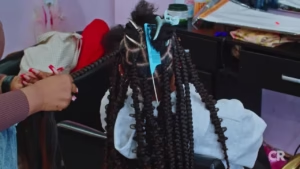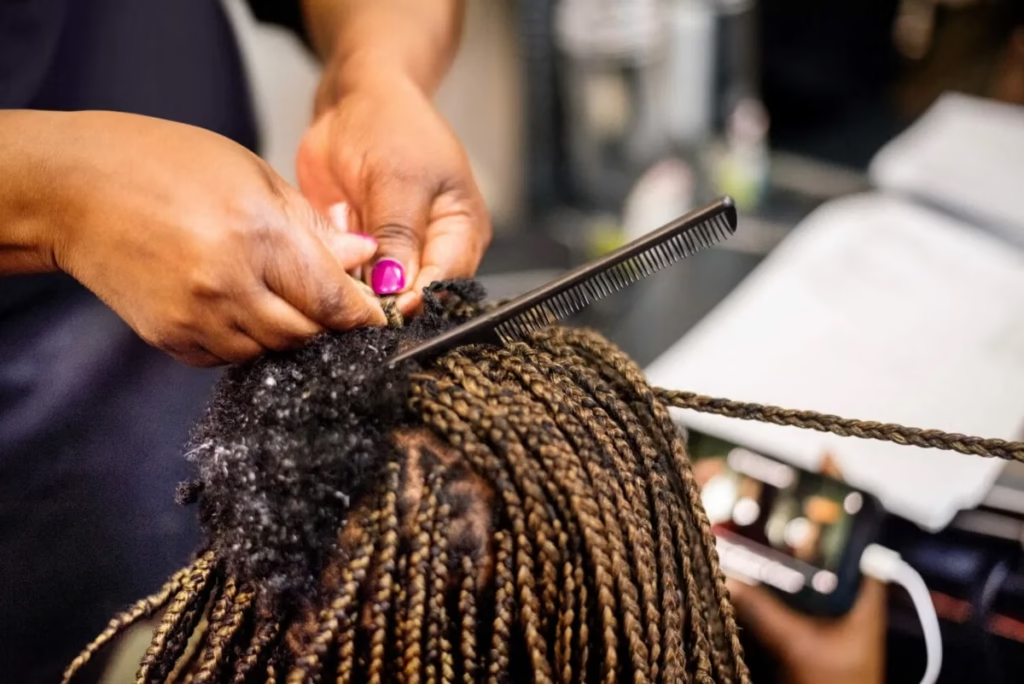Cancer-Causing Chemicals Found in Synthetic Braiding Hair
Imagine spending hours at the salon, excited to leave with a stunning new braided hairstyle, only to find out later that the synthetic hair used could harm your health. Recent studies have uncovered a troubling truth: some synthetic braiding hair contains cancer-causing chemicals. This discovery has sparked concern among stylists, customers, and health advocates alike. Let’s dive into what this means for you and how you can protect yourself while still rocking your favorite styles.
What’s Hiding in Your Synthetic Hair?
Synthetic braiding hair is a go-to for many because it’s affordable, versatile, and easy to style. But behind the convenience lies a potential danger. Researchers have found that some synthetic hair products contain harmful chemicals linked to serious health risks. Here’s what you need to know:

1. Formaldehyde: The Silent Threat
Formaldehyde is a chemical often used to preserve and strengthen synthetic fibers. While it makes the hair more durable, it’s also a known carcinogen. Prolonged exposure can lead to respiratory problems, skin irritation, and even cancer.
2. Phthalates: More Than Just Flexibility
Phthalates are added to synthetic hair to make it softer and more flexible. However, these chemicals are endocrine disruptors, meaning they can mess with your hormones and have been linked to cancer and other health issues.
3. Benzene: A Toxic Intruder
Benzene is another dangerous chemical sometimes found in synthetic hair. It’s associated with blood disorders like leukemia and can be particularly harmful with long-term exposure.
4. Heavy Metals: Unwanted Additions
Traces of heavy metals like lead and cadmium have also been detected in some synthetic hair products. These metals can build up in your body over time, leading to serious health problems.
How These Chemicals Affect You
You might be wondering, “How do these chemicals even get into my body?” The answer lies in how synthetic hair is used and handled:
- Inhalation: When synthetic hair is heated during styling, it can release toxic fumes that you breathe in.
- Skin Contact: Direct contact with your scalp or skin can cause irritation, rashes, or allergic reactions.
- Long-Term Exposure: Regular use of synthetic hair containing these chemicals increases the risk of chronic health issues, including cancer.
Symptoms to Watch For
If you’ve been using synthetic hair and notice any of the following, it might be time to reconsider your choices:
- Itchy, red, or irritated scalp.
- Coughing, wheezing, or difficulty breathing after styling.
- Headaches or dizziness when handling synthetic hair.
Why This Matters
Synthetic braiding hair is a staple for many, especially in communities where affordability and versatility are key. However the lack of strict regulations in the beauty industry means many of these products aren’t thoroughly tested for safety. This leaves consumers vulnerable to hidden dangers, often without even realizing it.
How to Stay Safe Without Sacrificing Style
The good news? You don’t have to give up your favorite braided looks to protect your health. Here are some practical steps you can take:
1. Choose Natural Alternatives
Opt for human hair or natural fiber extensions. While they may cost more, they’re less likely to contain harmful chemicals.
2. Do Your Homework
Research brands before you buy. Look for companies that prioritize safety and transparency, and check for certifications or third-party testing.
3. Wash Before Wearing
Always rinse synthetic hair thoroughly before installation. This can help remove some of the surface chemicals.
4. Skip the Heat
Avoid using heat styling tools on synthetic hair, as heating can release toxic fumes.
5. Speak Up
Advocate for better regulation in the beauty industry. Support organizations and initiatives that push for safer products and clearer labeling.
A Call to Action: Your Health Comes First
Your hairstyle shouldn’t come at the cost of your health. By staying informed and making smarter choices, you can enjoy beautiful braids without putting yourself at risk. Share this article with friends and family to spread awareness, and let’s work together to demand safer products for everyone.
Join the conversation on social media using #SafeHairCare and #BeautyWithSafety. Together, we can make a difference!



